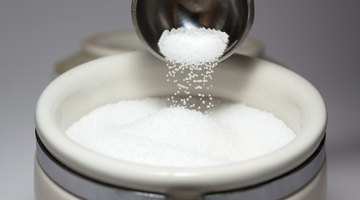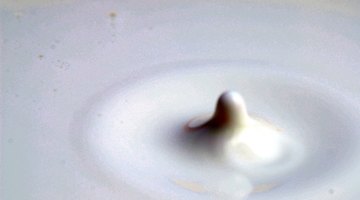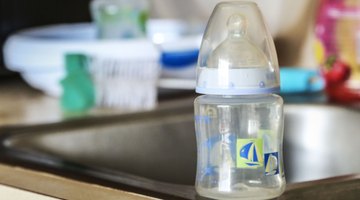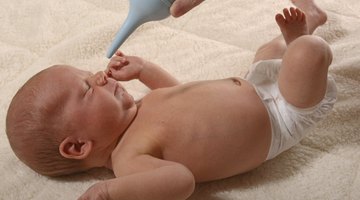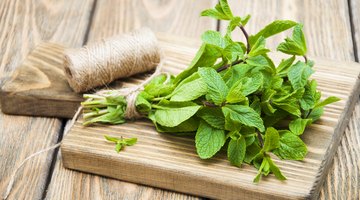How to Make Saline Nose Drops for Infants
Parents who go to the store looking for medicine to relieve their infant's stuffy nose are not likely to find any. According to a January 2008 recommendation of the U.S. Food and Drug Administration, over-the-counter cold and cough medicines that contain decongestants, expectorants, antihistamines or cough suppressants should not be given to infants and children under the age of two because of the risk of serious and possibly life-threatening side effects. As an alternative, your child's pediatrician may recommend the use of saline nasal drops and a bulb syringe to remove mucus and reduce inflammation in your infant's nasal passages. It is easy to make saline nose drops at home.
Fill a small sauce pan with either tap or distilled water and bring it to a boil. Boil the water for 10 minutes to eliminate any bacterial impurities.
Measure 1/4 tsp. of non-iodized or Kosher salt and 1/8 tsp. of baking soda and add them to 1 cup of the warm water. It is important to use the right amount of salt, baking soda and water because if the solution is too salty it can be irritating, according to the Children’s Mercy Hospitals & Clinics website.
Stir the salt and the baking soda into the water. Continue stirring until they completely dissolve. The saline solution can be stored for up to 24 hours in a clean container.
Fill a clean, sanitized bulb syringe with a small amount of warm saline solution. According to MayoClinic.com, the water should be about the same as body temperature. If the water is too warm, it can cause more irritation.
Add one to two drops of saline solution to each of your infant’s nostrils. According to the Children’s Mercy Hospitals & Clinics, you should wait about 10 to 15 seconds before you clean the mucus from the infant's nose with the bulb syringe.
Tips
Check with your healthcare provider before using saline nose drops on your infant.
Always wash your hands before making saline nose drops to prevent contamination.
Make fresh drops each day.
Warnings
Your infant's nose is very sensitive. Do not force the tip of the bulb syringe into your infant's nose when applying the drops or suctioning. Instead, hold the bulb syringe so that it just covers the outer edge of the nostril.
